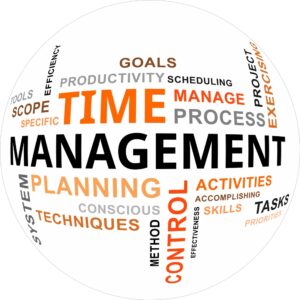Actionable steps for a productive job search
 The job search process can seem like a mystery. It can be particularly confusing if you plan to return to work after a long break, are changing careers, or are in the middle of a stalled search. But don’t be alarmed. The truth is, not much about the job search process has changed in the past 15 years. The tools have changed, but there still isn’t a magic wand. The number of job boards has increased. Yet, it’s still unlikely that applying for a published job without matched skills and experience or a referral will lead to anything. If you’re wondering where to begin or where you’ve gone off track, the following outline of actionable steps will guide you.
The job search process can seem like a mystery. It can be particularly confusing if you plan to return to work after a long break, are changing careers, or are in the middle of a stalled search. But don’t be alarmed. The truth is, not much about the job search process has changed in the past 15 years. The tools have changed, but there still isn’t a magic wand. The number of job boards has increased. Yet, it’s still unlikely that applying for a published job without matched skills and experience or a referral will lead to anything. If you’re wondering where to begin or where you’ve gone off track, the following outline of actionable steps will guide you.
1. Assess your skills and interests.
Begin by taking an inventory all of your skills. List your demonstrated hard skills (technical, budgeting, process management, and project coordination). Then consider your soft skills (listening, caring, and empathizing.) This analysis will require some thought. Which skills do you prefer to use? What types of functions are you good at? Which are current or marketable? Next, list what you value most (time with family, learning, skilled leadership, and collaboration.)
- Before you assume you’re not good at anything, review job descriptions to see what employers are asking for. Look up terms you don’t recognize. What you find may surprise you. There may be skills listed you hadn’t thought of or are known by another name now.
- If your soft skills are your happy place, then review occupations where they’re in demand. Consider examples of your work that demonstrate how you use them. But relating to only parts of a job description isn’t enough. Be careful to acknowledge the technical skills needed to position you as a viable candidate.
Be honest with yourself.
- Identify the skills you’ve decided to emphasize. Be honest with yourself. Are they current? If you did some coding years ago, you’re probably no longer up to speed. If you used to run a cash register but have never made or received an online payment, learn how. A class can serve as a refresher to help bring you up to speed quickly. Online practice can also work. But before you sign up for any training, speak with people currently working in the roles you’re interested in. People doing the job will be able to describe what to focus on.
- Finally, do you know if your skills are marketable or competitive based on current market conditions? Once again, be honest with yourself. Review the profiles of people with similar titles and compare what they have done to your experience. Look for commonalities.
- Get professional guidance if you’re unsure. You’ll ultimately save time if you are guided by someone familiar with your chosen industry.
- Create a hypothetical picture of the environments that will satisfy your interests.
2. Set goals with clear objectives and timelines.
 The process doesn’t begin or end with a wish and a prayer. Once you have ideas about the skills you want to emphasize and what the workplace should be like, it’s time to get more specific. Think through what you want to learn and how you’ll go after the information. Set objectives for what you want to accomplish. You may not have a specific title or company in mind now, but that is what you will need to research.
The process doesn’t begin or end with a wish and a prayer. Once you have ideas about the skills you want to emphasize and what the workplace should be like, it’s time to get more specific. Think through what you want to learn and how you’ll go after the information. Set objectives for what you want to accomplish. You may not have a specific title or company in mind now, but that is what you will need to research.
- Develop target companies/industries/jobs that sound interesting.
- Plan out the steps you need to take to learn more. Don’t assume that everything you need to know about a company or a job will be included in a job description. Investigate each scenario, long in advance of applying.
- Write out each step of your research plan and map it in your calendar. Include internet searches, conversations, and even drive-bys.
Be intentional.
- Be intentional with your time. Use a regular work schedule to complete your tasks. Plan and schedule everything.
- Evaluate your finances and create a budget. Don’t assume you can float indefinitely on unemployment benefits. How much cash do you have? When will you need more?
- It will behoove you to behave as if you have zero income. Taking the summer off and assuming you’ll ramp up later typically doesn’t turn out well.
- Once you distinguish between your NEEDS and WANTS, you can evaluate different paths to reach your goals. In a tough market, holding out for the “perfect” job or more money could leave you empty-handed. You’re in a more powerful position when you have several options.
3. Create a “master” resume.
 You’ll need a current resume if you’re changing fields or have been out of the loop for a while. I help my clients develop what I refer to as a master resume. The master resume is the foundation for developing tailored resumes later. Please note: your unedited master resume is for your use only. NEVER send it to ANYONE. The master resume contains too much information for a recruiter or employer to read. (Don’t send it to get their opinion. If they take the time to read it, they will surely tell you what you already know- it’s too long.)
You’ll need a current resume if you’re changing fields or have been out of the loop for a while. I help my clients develop what I refer to as a master resume. The master resume is the foundation for developing tailored resumes later. Please note: your unedited master resume is for your use only. NEVER send it to ANYONE. The master resume contains too much information for a recruiter or employer to read. (Don’t send it to get their opinion. If they take the time to read it, they will surely tell you what you already know- it’s too long.)
- Document all of your work history from the past 15 years. Past titles will mean little if you intend to change directions.
- Add context: Include the job context: the company size, your overall job purpose, number of people you managed, and the size of your budget.
- Be sure to include quantified/qualified examples of your achievements. Include projects: your role, scope, who was impacted, and the outcome.
- This process is for YOUR benefit. You will learn more about what is relevant to the roles you’re moving toward. It allows you to add and edit without confusion. Without this documentation, it’s much harder to think of examples later.
- Create a tailored resume to fit each/ every position you pursue. To reiterate: use the master to select only relevant information for each role you apply for. Include skills or experience you’ve learned that are relevant but not included in the job ad. A previously tailored version of your resume may later only require slight tweaks when you apply for similar roles.
- Make sure to update your master resume and LinkedIn profile with new training or projects you are working on outside of paid employment. It will be most beneficial if the additional information speaks to the roles you’re going after.
4. Create a LinkedIn profile.
Whether you are new to social media or use several other platforms, LinkedIn is one of the most widely used platforms for communicating with employers and professional contacts. A LinkedIn presence allows you to research the skills and companies you’re interested in. You don’t need to pay a premium, nor do you need to be a marketing wizard to reap the benefits. You do need to add enough information to show credibility when others respond.
- Contrary to what recruiters say, I don’t recommend using the “open for work” circle. I think it provides false hope to job seekers. What are the odds that this will lead to your perfect job? Yes, using “open for work” allows recruiters to find you more quickly. And, this could be helpful if you are unique. (Ask some of the millions of unemployed recruiters how that’s working for them.) But it also puts you at risk for an unexpected call that most people are ill-prepared for. Recruiters contact candidates because their client needs their skills or experience. If you are one of the millions of people who do the same job, your odds of finding the “right” job do not increase. If you are an executive, there is a bit of desperation in announcing to the world that you are basically open to anything.
- Use subject areas/skill sets under your name vs a job title. Titles inherently appear in your listed experiences, so adding a title under your name is redundant. More importantly, your past titles may be irrelevant to the direction you want to go. All the more reason to state areas of focus instead of a job title under your name.
Your profile needs to showcase data relevant to the jobs you pursue.
- Instead of a catchy or clever profile, stick with the facts. Self-assessments about how talented you are are meaningless. Instead, include skills in your summary. When someone needs your skills or experience, they’ll find you. In the meantime, as you reach out to people, you’ll show credibility. Your profile needs to showcase data that is relevant to the jobs you pursue.
- Expand your summary as you learn more about the skills needed in your targeted jobs.
- Put the emphasis on the employment experiences that show examples of the skills needed for the jobs you’re pursuing.
- If an employment experience is irrelevant but falls within your last ten years, add it in with only brief information.
- Include the job context: the company size, your overall job purpose, number of people you managed, and the size of your budget.
- Include projects: your role, scope, who was impacted, and the outcome.
5. Expand your network.
One goal for speaking with people is to confirm your assumptions. Another is to find out what you don’t know. Having a productive network requires more effort than randomly connecting with anyone. Look for people who are in the industry you’re interested in. Find people who do the work you think you want to do.
- Start by asking your current contacts for introductions to people in their networks, where possible.
- Provide a reason when you ask to connect to people on LinkedIn. Most people don’t appreciate getting requests from strangers whose only reason to connect is to be introduced to a hiring manager. Instead, ask for a conversation about their career path, training, skills, or current challenges.
- Design open-ended questions that will help you learn more about current and marketable skills. The people in the role will describe their work better than the information you find in job announcements.
- You can also develop these relationships to learn more about that company’s upcoming needs and potential new opportunities.
- Be ready to respond if you are alerted of a new opening with a company. In a tough market, waiting to apply for a posted position can cause you to miss the opportunity. A position will close within days when there are hundreds of applicants.
6. Prepare for interviews.
 The interview is your opportunity to provide the information the employer needs to make a good decision. It’s not your opportunity to tell them everything you want to say. Know the difference. Don’t think that because you’re informed, you can wing your way through an interview. You don’t need to be an extrovert or flashy or cute. But you do need to be concise, thorough, and attentive. This takes preparation. This requires preparation.
The interview is your opportunity to provide the information the employer needs to make a good decision. It’s not your opportunity to tell them everything you want to say. Know the difference. Don’t think that because you’re informed, you can wing your way through an interview. You don’t need to be an extrovert or flashy or cute. But you do need to be concise, thorough, and attentive. This takes preparation. This requires preparation.
- Research to learn all that you can about a company or position.
- Write out answers to frequently asked questions (in your field.)
- Make sure the examples of your experience are relevant. Don’t assume the interviewer will connect the dots. Translate your description to show how it fits.
- Practice your answers with someone who understands the industry.
- Prepare open-ended questions for the interviewer that relate to the work, the team, or the company. (Questions about salary and benefits should come AFTER you have shown value.)
7. Manage your behavior.
Creating a plan, managing your time, and maintaining a positive attitude are critical to succeeding in a competitive market. Adopting the following behaviors will also help you to compete in a tough market.
- Get up and be ready to work at a time the jobs you want require.
- Don’t restrict your search to business hours.
- Be flexible.
- Exhibit a high level of urgency.
- Be willing to face change.
- Show your ability to overcome and solve problems.
- Demonstrate clear communication skills.
- Maintain a positive attitude.
 Overall, you can make the most of your time and avoid the aggravation an unproductive job search brings. Completing these actionable steps will help you to be a strong competitor. The tough job market doesn’t have to paralyze you. Although there isn’t a magic pill to make you instantly employed, the process isn’t rocket science. If you don’t try this recipe, then you won’t know, will you?
Overall, you can make the most of your time and avoid the aggravation an unproductive job search brings. Completing these actionable steps will help you to be a strong competitor. The tough job market doesn’t have to paralyze you. Although there isn’t a magic pill to make you instantly employed, the process isn’t rocket science. If you don’t try this recipe, then you won’t know, will you?
For more career advice, check out my webinars on Goal Setting – Getting Focused, Managing Multiple Commitments – Getting it all done!, Career Assessment and follow me on LinkedIn and (X) Twitter.





